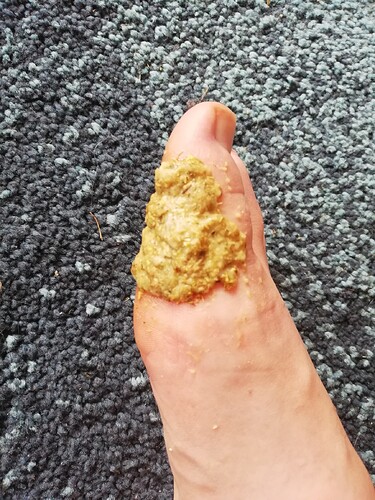Guess who stepped on a bee ![]()
![]()
(well, a while ago- it took a while to write this up, I’m all better now! ![]() )
)
I suppose it was only a matter time with all the lavender and flowers in bloom- the bushes in the garden are buzzing with bees from sun up to sun down!
Anyway, this method worked like a charm to combat pain and reduce swelling. I’ve written it in my Grimoire and wanted to share the page with you all too- although of course I hope you never have to use it! ![]()
![]()
Bee Sting Poultice
Please note that this poultice is for quick treatment of minor bee sting injuries- if you are allergic to bees and were stung, please seek immediate medical attention
You will need:
-
 Chamomile - fresh or dried (opening up a tea bag will work perfectly)
Chamomile - fresh or dried (opening up a tea bag will work perfectly)
Why chamomile?
Using chamomile for bee stings was something I learned while studying under an herbal master in Tuscany, Italy. The healer told me she had once used fresh chamomile to save someone who had gone into shock after a bee sting and keep them stable until the paramedics arrived. I never forgot the story.
Chamomile is a medicinal herb believed to have anti-inflammatory properties. In magick, it is a soothing and relaxing herb with tranquilizing properties (more about Chamomile in magick here)
-
 Baking soda
Baking soda
Why baking soda?
Baking soda has long been a “household remedy” for bee stings. It was recommended to me by my mother. Several sites (such as Healthline) also recommend baking soda for use against insect bites and bee stings, as it is believed to help neutralize the toxins in the stinger.
-
 Water
Water
Why water?
The main role of water here is to bind the dry ingredients together and create a poultice you can work with.
Magickally, water is the element of healing. It has natural soothing, cooling, and relaxing properties (more about water in magick here)
When you are stung by a bee:
-
Remove the stinger immediately.
-
Wash the area with soap and water if you can. You are trying to remove as much of the toxins as possible and prevent infection.
-
Make a poultice of baking soda and chamomile. To do so, mix baking soda with an opened bag of chamomile tea and water until it forms a thick mixture. (Note that while you or someone else is mixing the poultice, you can hold ice to the sting to help combat pain and reduce inflammation
 )
) -
Apply poultice to sting. It should be thick enough to clump on.
-
When the mixture begins to dry and fall off, wash off the area, dry it, and apply a fresh layer of poultice. Continue until the poultice is gone and you no longer feel pain from the sting.
This is what the poultice looked like on my foot- it should be moist enough to stick but thick enough to clump and stay together
Again, it’s a great recipe- but one I hope I (and you!) never have to use again!
Blessed be(e)! ![]()
![]()
